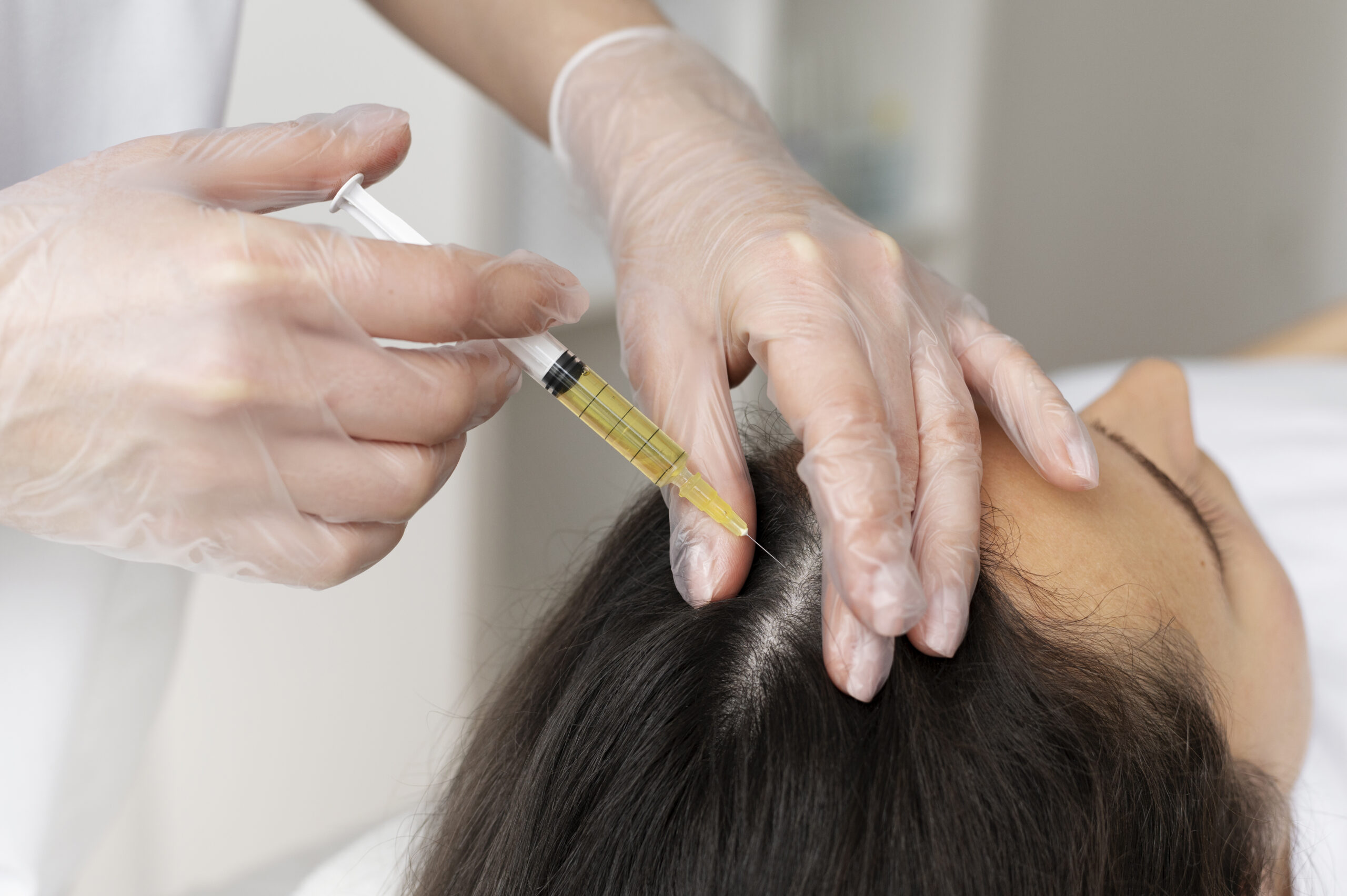Hair PRP Therapy: A Revolutionary Service Offered by Modern Clinics
Besides successes in aesthetic and medical procedures, hair loss continues to be a serious concern for millions of people. And while we have had treatments such as hair transplant surgeries and topical solutions, PRP therapy emerged as a more effective and non-invasive approach. This innovative technique works on the physiological mechanisms of the human body to effectively address hair loss in a safe and evidence-based manner. Being one of the most popular treatments, PRP hair restoration is revolutionizing the process of hair thinning and loss.
Understanding PRP Therapy
PRP therapy is a method of hair restoration where the patient’s blood is used to promote hair growth. The process starts with the withdrawal of a small volume of blood, which is then spun in a centrifuge in order to separate the platelets from other components. These concentrated platelets, which are full of growth factors, are then injected into the scalp where there is thinning of hair. These growth factors help to repair hair follicles and help in the production of fresh healthy hair strands.
The Science Behind PRP
Platelets have great power to boost healing process of the body. They consist of proteins, hormones and other growth factors that are needed in the process of regeneration of tissues as well as growth of cells. These are injected into the scalp where they interact with the stem cells present in the hair follicles to make them stronger and wake up the sleeping follicles to grow hair. This biological stimulation leads to improved hair density and thickness and may also help halt hair thinning.
The Procedure
The PRP treatment for hair loss is a multi-step process, typically completed within an hour. Here’s a breakdown of what patients can expect:
- Consultation: The process starts with an initial consultation with a specialist, where the patient’s hair loss pattern, health status, and condition for PRP treatment are evaluated.
- Blood Draw: This is normally done by pricking the patient’s arm to get a small amount of blood.
- Centrifugation: The collected blood sample is first placed in a centrifuge where it is spun at high speed to separate the platelets from the rest of the blood components.
- PRP Preparation: The concentrated PRP is obtained and ready for injection.
- Scalp Injection: Using a fine needle, the PRP is injected into the areas of the scalp where hair thinning or loss is prominent


Benefits of PRP for Hair Restoration
PRP therapy offers several advantages that make it an appealing option for individuals seeking to combat hair loss:
- Minimally Invasive: However, PRP therapy is a relatively low-risk treatment as compared to surgical FUT hair transplants as it is not surgical, thus taking a shorter amount of time to perform and has barely any downtime.
- Natural Results: Another advantage of PRP is that since it involves the use of the patient’s own blood, there is no likely hood of one contracting a disease or any allergic reactions to a foreign substance.
- Safety: Hence, PRP is highly safe with minimal side effects such slight soreness at the site of injections.
- Effectiveness:
- Patients and doctors’ reports reveal that the hair density and thickness increases dramatically of within a few months after the treatment.
- Versatility: PRP can be used alone or in conjunction with other hair restoration treatments for enhanced results.
Who Can Benefit from PRP?
PRP therapy is suitable for both men and women experiencing various types of hair loss, including:
- Androgenetic Alopecia: Typically referred to as male or female pattern baldness is a condition that results to thinning hair and a receding hairline.
- Alopecia Areata: A type of an autoimmune disease that occurs when the body’s immune system targets hair follicles thus causing baldness in patches.
- Telogen Effluvium: A type of hair loss that happens when hair grows back and falls out again at the same time, brought on by stress, sickness or changes in hormones.
- Traction Alopecia: Damage resulting from pulling or tugging the hair stringently.

PRP as Part of a Comprehensive Treatment Plan
PRP therapy is a powerful treatment when used as a standalone treatment; nevertheless, many clinics use it in combination with other procedures to reach the final result. This might include the administration of PRP alongside drugs such as minoxidil or finasteride, low level laser therapy or indeed hair transplant surgery for severe cases. The ideal is to formulate the comprehensive strategy for the patient aimed at achieving the greatest positive outcome for them and based on the factors that caused alopecia.
The Patient Experience
PRP therapy is minimally invasive in nature of the procedure and the natural-looking results. Here’s what a typical patient journey might look like:
- Initial Consultation: Patients concerns are shared with a specialist; thereafter a scalp examination is conducted. The medical history of the patient is reviewed to determine if PRP is a suitable solution for them.
- Treatment Sessions: It is recommended that patients receive PRP treatment multiple times with sessions scheduled in intervals of few weeks.
- Follow-Up: Subsequent check-ups ensure that the specialist is aware of any changes or developments in the patient’s condition, and if any changes have to be made the specialist will adjust the treatment plan accordingly.
- Results: Follicular hair growth will start showing some changes on the hair density and thickness within the first few months options are available to get the best results within six to twelve months.
undefined
Advancements and Future Prospects
Future advancements are under consideration for better results:
- Enhanced PRP Formulations: Further incorporation of growth factors or stem cells to achieve even more hair growth.
- Improved Injection Techniques: Developing more precise methods for delivering PRP to the scalp to maximize its benefits.
- Combination Therapies: Further investigations on possibilities of combining PRP with other therapies to improve overall accrued results.
Conclusion
Hair PRP therapy is ideal hair loss treatment which is minimally invasive, safe, and an effective solution. By harnessing the body’s natural healing processes, PRP provides long-lasting and natural-looking results.

